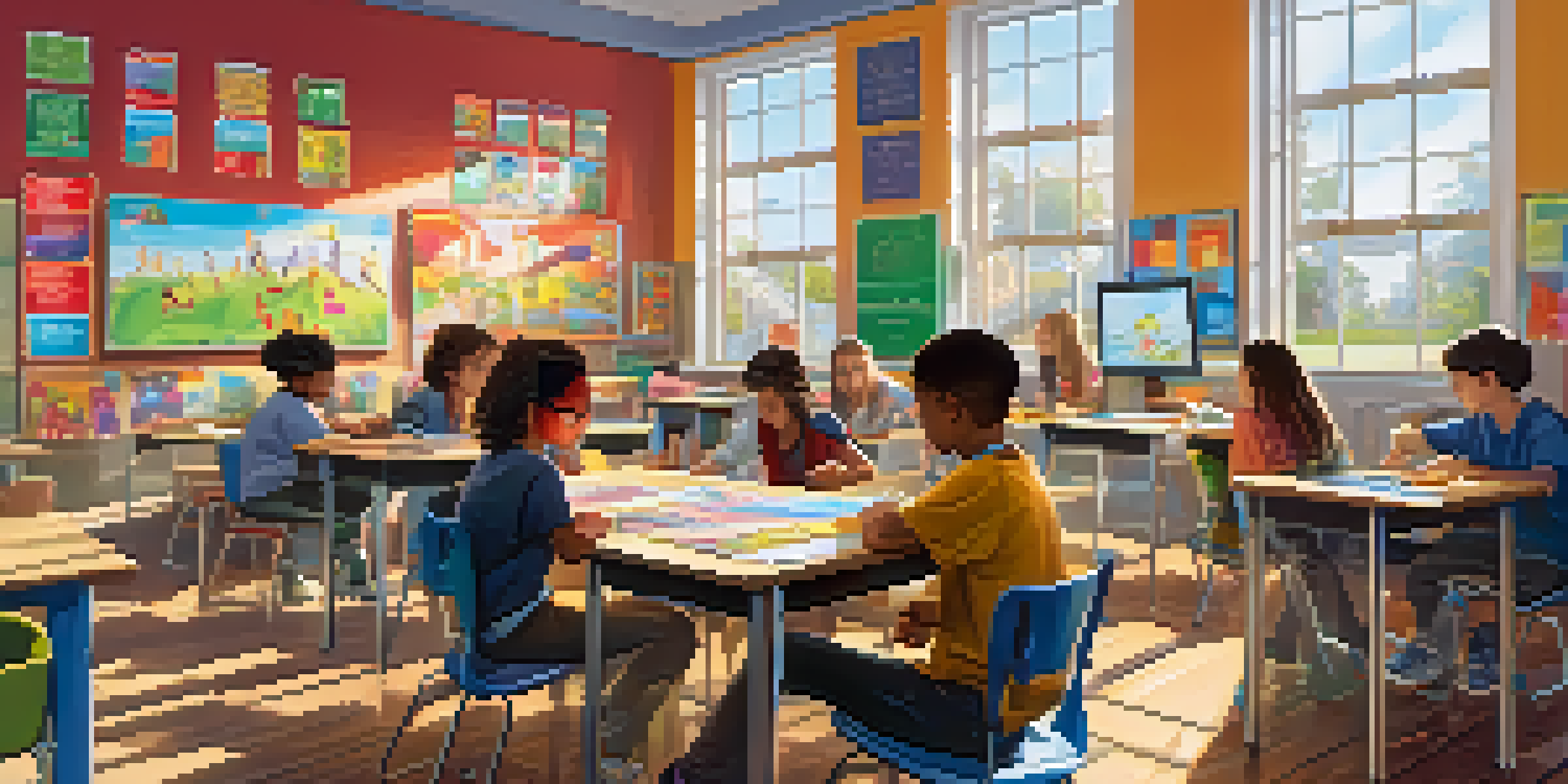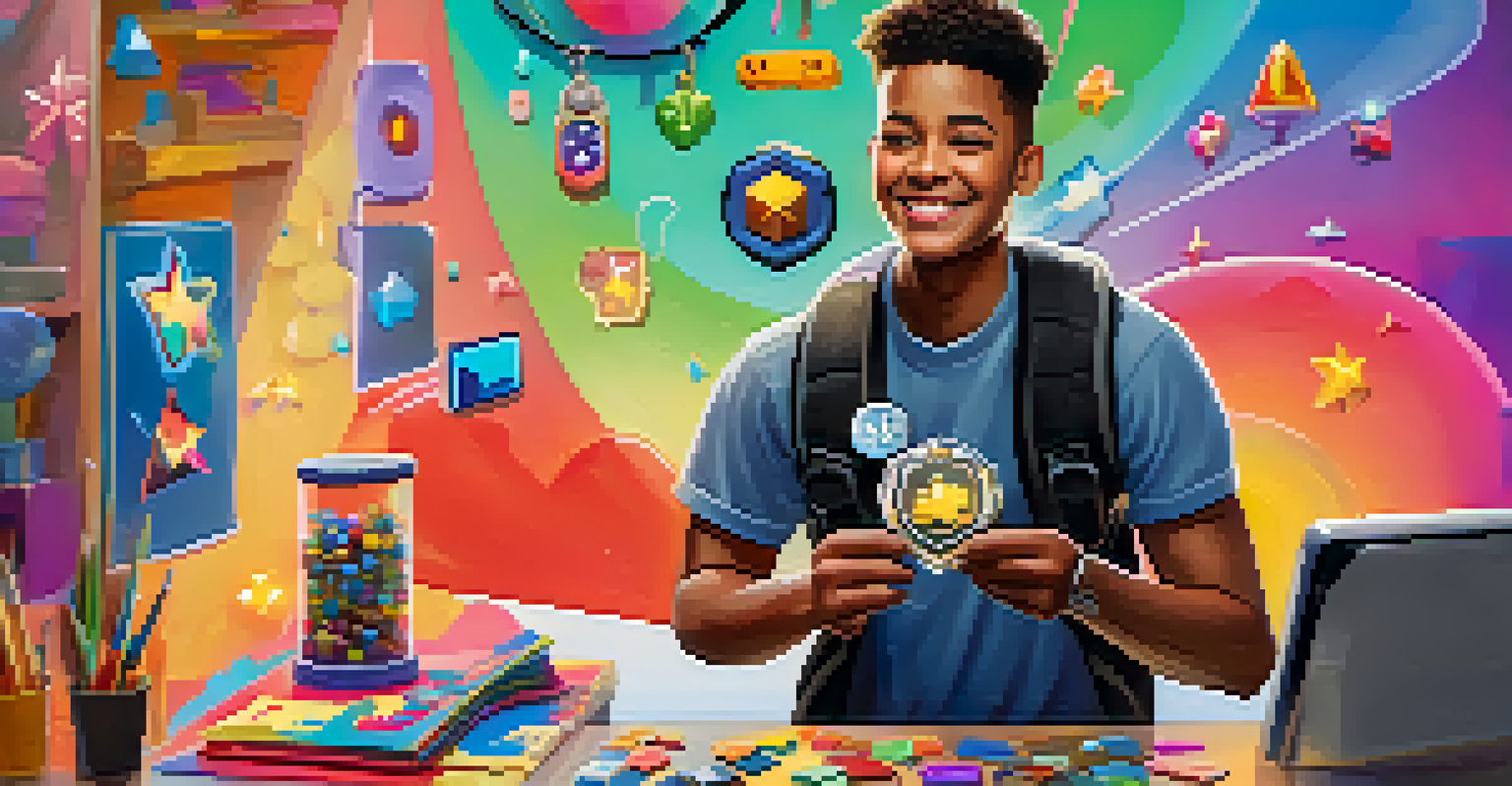The Role of Rewards in Gamified Learning Environments

What is Gamified Learning and Why It Matters
Gamified learning integrates game elements into educational settings to boost engagement and motivation. Imagine a classroom where students earn points for completing assignments, much like leveling up in a video game. This method not only makes learning more enjoyable but also encourages a sense of achievement. As a result, students are more likely to participate actively and retain information better.
Games give you a chance to excel in a way that you might not otherwise have had the opportunity to do.
The shift towards gamified learning reflects a growing understanding of how people learn best. Traditional learning methods can sometimes feel dull and uninspiring, leading to disengagement. By introducing game-like features, educators can create a dynamic environment that resonates with today's learners. This shift is particularly important in an age where attention spans are shorter than ever.
Ultimately, gamified learning environments aim to foster a love for learning while making the process enjoyable. Just like in games, achieving milestones can inspire students to push their limits. This concept not only enhances knowledge acquisition but also builds essential skills such as problem-solving and teamwork.
The Psychology Behind Rewards in Learning
Rewards play a critical role in motivating learners, tapping into basic psychological principles. The concept of reinforcement suggests that behaviors followed by positive outcomes are likely to be repeated. For instance, when a student receives a badge for completing a task, they associate that achievement with the effort put in, reinforcing a positive cycle of learning.

Moreover, the anticipation of rewards can increase engagement levels. Think about how players in a game eagerly await the next level or special item; similar excitement can be harnessed in educational contexts. This anticipation keeps learners engaged, as they strive toward their goals, creating a sense of purpose in their studies.
Gamified Learning Boosts Engagement
Integrating game elements into education makes learning enjoyable and encourages active participation.
It's important to note that not all rewards are equal. While extrinsic rewards like badges and points can be effective, intrinsic motivation—where learners find personal satisfaction in their accomplishments—is essential for long-term engagement. Balancing both types of rewards can create a more holistic approach to learning.
Types of Rewards Used in Gamified Learning
In gamified learning environments, rewards can be categorized into extrinsic and intrinsic types. Extrinsic rewards may include points, badges, or certificates that provide tangible recognition for achievements. For example, a student might earn a badge for completing a challenging module, which visually represents their success and can be shared with peers.
The greatest rewards come from the hardest challenges.
On the other hand, intrinsic rewards stem from the enjoyment and satisfaction of learning itself. When a student grasps a difficult concept, the joy they feel can be as rewarding as any tangible prize. By incorporating both types of rewards, educators can cater to diverse motivational needs among students.
Additionally, social recognition can serve as a powerful reward. Publicly acknowledging a student's effort in front of their peers can enhance their self-esteem and encourage further participation. This social aspect of rewards can foster a sense of community within the learning environment.
Setting Reward Systems for Maximum Impact
Creating an effective reward system requires careful planning and consideration of learners' needs. Start by identifying clear objectives and the behaviors you want to encourage. For instance, if collaboration is a goal, consider rewarding group projects with team points or collective badges, fostering a sense of teamwork.
Another key aspect is ensuring that the rewards are achievable and relevant. If students perceive rewards as too difficult to attain, they may become discouraged. Offering tiered rewards—like small incentives for short-term goals and larger ones for long-term achievements—can help maintain motivation and provide a sense of progression.
Rewards Enhance Motivation
Both extrinsic and intrinsic rewards play a crucial role in motivating learners and fostering a love for learning.
Lastly, gather feedback from learners about the reward system. Their insights can help refine the approach and ensure that it resonates with their interests. By involving students in the process, you create a more inclusive environment that values their input, making rewards feel more meaningful.
Challenges of Implementing Rewards in Learning
While rewards can enhance motivation, they can also present challenges if not implemented thoughtfully. One common issue is the potential for over-reliance on extrinsic rewards, which may undermine intrinsic motivation. If students are primarily motivated by points or badges, they may lose sight of the joy of learning itself.
Additionally, rewards can create competition rather than collaboration. In environments where students are pitted against one another for rewards, it can foster a sense of rivalry that detracts from community spirit. Striking a balance between competition and collaboration is crucial for a healthy learning environment.
Moreover, the effectiveness of rewards can vary among students. What motivates one learner may not resonate with another. This variability means that educators must be adaptable and willing to reassess their reward systems to ensure they meet the diverse needs of their students.
The Future of Rewards in Gamified Learning
As technology continues to evolve, so too will the ways we implement rewards in gamified learning environments. Innovations such as personalized learning platforms can tailor rewards to individual student preferences and progress. Imagine a system that adjusts challenges and rewards based on real-time performance—this could revolutionize the learning experience.
Moreover, advancements in data analytics can help educators better understand how rewards impact student engagement and performance. By analyzing trends and behaviors, teachers can refine their strategies and create more effective reward systems. This data-driven approach ensures that rewards remain relevant and impactful.
Future of Learning is Data-Driven
Advancements in technology and analytics will personalize rewards, creating more effective and engaging learning experiences.
Ultimately, the future of rewards in gamified learning will likely focus on creating holistic experiences that blend intrinsic and extrinsic motivation. By harnessing technology and innovative strategies, we can create learning environments that not only engage students but also instill a lifelong love of learning.
Conclusion: Embracing Rewards for Effective Learning
In conclusion, rewards play a vital role in enhancing gamified learning environments. They not only motivate students but also contribute to a more engaging and enjoyable educational experience. By understanding the psychology behind rewards and implementing them thoughtfully, educators can foster a culture of achievement and collaboration.
As we look towards the future, it’s essential to remain adaptable and open to new ideas in reward systems. Continuous feedback from students and advancements in technology will guide us in refining our approaches. Ultimately, the goal is to create an environment where learning is celebrated and students feel empowered to reach their full potential.

So, whether you're an educator or a learner, embracing the role of rewards in gamified learning can lead to a more enriching and fulfilling educational journey. Let’s harness the power of rewards to inspire the next generation of learners!